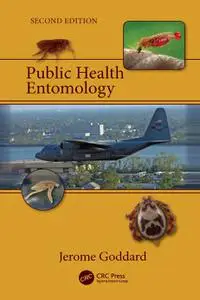Public Health Entomology; 2nd edition
by Jerome Goddard
English | 2022 | ISBN: 0367636476, 978-0367636463 | 323 pages | True PDF | 35.61 MB
by Jerome Goddard
English | 2022 | ISBN: 0367636476, 978-0367636463 | 323 pages | True PDF | 35.61 MB
In the struggle against vector-borne diseases, it is critical that we bridge the gap among vector control workers on the ground (practitioners), public health planners and administrators, and (academic) medical entomologists. This second edition of Public Health Entomology is designed to fit Certificate courses in public health entomology offered by universities and U.S. Centers of Excellence. It comprehensively examines vector-borne disease prevention, surveillance, and control from a governmental and public health perspective with worldwide application.
Divided into two sections, the book begins with a historical account of the early beginnings of pest control and public health. Next, it outlines the concepts, design, and implementation of a sound public health entomology program, including issues associated with pesticide use, FEMA and other disaster response entities, and an adverse, chemophobic public. The second section provides an overview of some of the most common public health pests that are found globally. Copious photos and line drawings accentuate the text, along with textboxes and sidebars. The new edition addresses "IPM and Alternative Control Methods" in each section, expands the Lyme disease section and includes other new and emerging tick-borne diseases (TBD). It includes enhanced discussion of working with local political figures and jurisdictions, as well as partnerships with academia, and is generally more worldwide in scope.
Author Jerome Goddard designed and implemented the vector control program along the Mississippi Gulf Coast after Hurricane Katrina. His ability to communicate his knowledge and experience to public health students, professionals, and the general public make this book an essential resource for preventing disease from these vector-borne threats.



